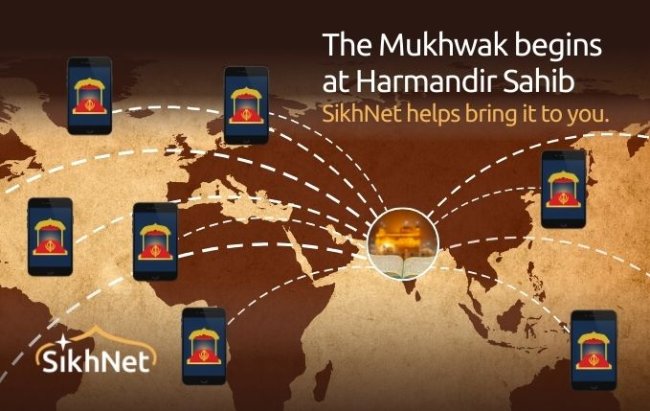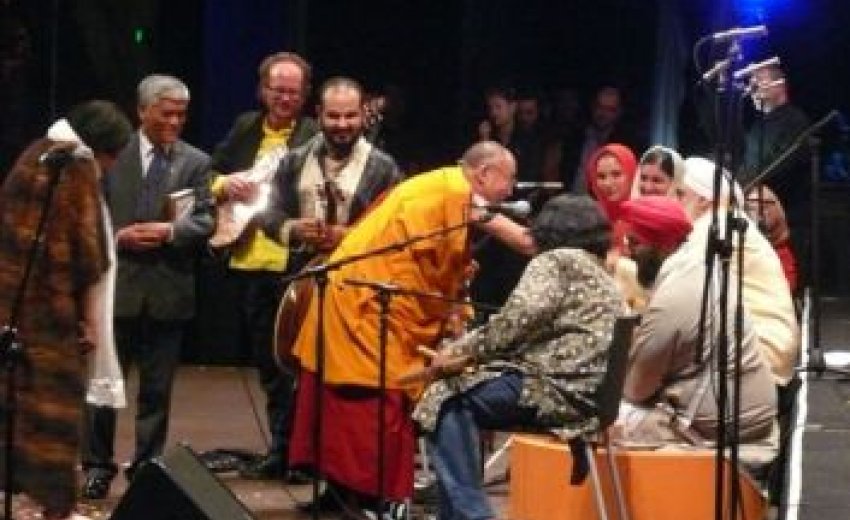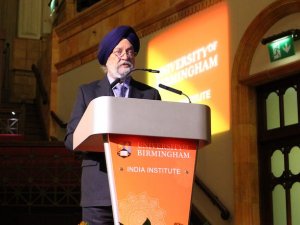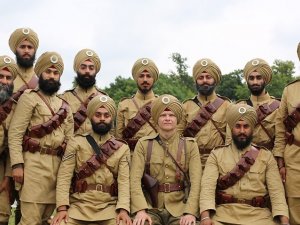| "The war on terror has not only increased racial violence, harassment, and adverse employment actions against Sikhs with turbans; it has also led to a more abstract questioning of the proper degree to which visible immigrant minority groups should be part of mainstream Western society." .....(Neha Singh Gohil & Dawinder Singh Sidhu) |
Darbar Sahib visits by Western leaders, including UK's Prime Minister, David Cameron, recognise growing Sikh political influence in diaspora countries. The following is a summary of my briefing paper to the Sikh Council UK. The paper, based on intensive field research by those like Neha Singh Gohil & Dawinder Singh Sidhu (see end note), discusses identity related issues and challenges.
There was a time when the British insisted that Sikhs joining the colonial British Army must be Amritdhari (fully initiated), practising Sikhs wearing all their articles of faith. During the two World Wars, some 1.5 million Amritdhari Sikhs fought for the freedom of the United Kingdom, Europe and humankind. 83,000 Sikhs gave their lives, whilst 110,000 were wounded. Many gallant Sikhs were awarded Victoria Crosses (or equivalent awards) for their bravery.
Sikhs have been living in some Western countries like the United Kingdom, Canada and America as a significant visible community for well over half a century. Before that, during the British colonial period, they were encouraged to migrate to countries in East Africa and South East Asia as soldiers, policemen and skilled workers. In recent years Sikhs have migrated to Australia and even to South American countries. Yet, direct and indirect challenges to visible Sikh identity have increased, especially since 9/11; so that their sense of belonging in the Western countries they live in as hardworking and law abiding citizens, has been "put in jeopardy".
Are Sikhs actually being directly targeted as a group or a community for persecution? Are they being persecuted like the Jews before and during World War II Germany? May be not, but "tangible" and "intellectual" discrimination in a number of ways and in many fields, against visible Sikh identity, discussed later in this article, has been on the increase. More than a decade after 9/11, it is no longer a case of "mistaken identity". The truth is that visible Sikh identity is under attack in the West, and Sikhs in America and Europe are increasingly going to the courts for justice to secure incremental protection, case by case. Some under-resourced Sikh organizations are doing their best to defend Sikh religious freedoms with limited success.
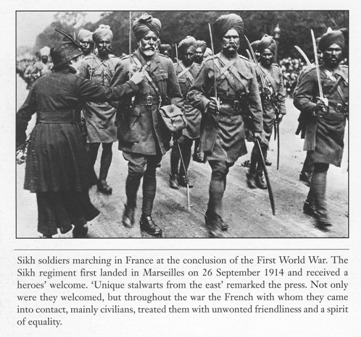 |
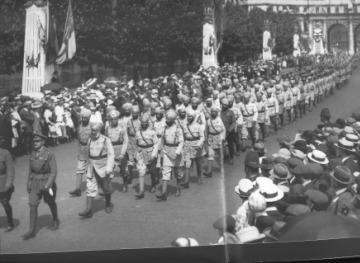 Sikhs WWI - London |
The continuing need is to escalate the Sikh case through political lobby and the courts in Western countries. A massive effort in terms of collating evidence and funding will be required. Lack of education about Sikh religion leads to lack of understanding of the nature of discrimination and how it impacts on the daily lives of the practitioners, and, especially the Amritdhari Sikhs.
Studies have shown a close link between religious and ethnic persecution. The Sikhs, stand out due to their distinct religio-cultural identity, and suffer prejudicial treatment, both as a religious, and as an "ethnic" minority.
Question of classifying Sikhs: The purpose of this briefing, first prepared for the Sikh Council UK, is to inform those who would take up the Sikh case, to show that: Sikhism is a world religion; Sikhs are also protected under UK's race relations law as an ethnic minority; .and that challenges to Sikh Identity in the West are: direct ("tangible") in the nature of assaults by ordinary citizens on Sikh identity, or exclusion of Sikh identity from certain fields, and, indirect ("intellectual") through "neutral laws" of state which, in practice, operate against Sikh religious freedom.
An American Circuit Judge Frank Easterbrook, 2003 said, "Those who keep heads covered as a sign of respect for (or obedience to) a power higher than the state should not be threatened with penalties. Nor should they be threatened with marginalization, physical injury, or even death because of a superficial resemblance with our real shared enemy." Two research writers Gohil and Sidhu wrote, "The war on terror has not only increased racial violence, harassment, and adverse employment actions against Sikhs with turbans; it has also led to a more abstract questioning of the proper degree to which visible immigrant minority groups should be part of mainstream Western society."
Sikhism is a world religion: After Hinduism and Islam, Sikhism has been referred to as the "Third Path" (Tisra Panth) i.e. the third major religion in India. According to a prominent Sikh scholar Sardar Daljeet Singh (author "The Sikh Worldview"), world religions can be generally divided into two broad categories: dichotomous and whole life religions. In dichotomous religions, also referred to as life-negating religions, life is divided into two opposing, spiritual and worldly (temporal) parts. In these religions, the purpose of human life concerns the pursuit of spiritual goals only. They are entirely concerned with hereafter and regard this life and existence as false (mythia). Dichotomous religions follow the spiritual path by practicing asceticism (sanyasa), monasticism, pacifism and celibacy. With the exception of Sikhism, Indian religious systems belong to this category.
Words like "dharma" and "qaom", have been used by some to confuse discussions in the past, rather than to clarify the distinct nature of Sikh religion. Sikhs as a "people", and Sikhs regarding themselves as a "nation" are issues which can be discussed with reference to international law and relevant UN instruments.
In whole life religions spiritual and worldly aspects of life are brought together. God love is interpreted as serving fellow human beings. Social activism is seen as counterpart of love for God. Judaism, Christianity, Islam and Sikhism belong to this category of whole life religions.
"Religion" or "dharma: Sikhs are also a "people" and a "nation" under international law and relevant UN instruments.
The word "dharma" can have many meanings. The word can refer to one's duty in any relationship or circumstance. It may also mean social custom, righteous behaviour, Hindu social (e.g. caste division and discipline), or moral law, and so on. Dharma can mean many different things and is rather a subjective concept in India. In the Sikh tradition the word is also used to mean the "law" which upholds creation; and this plane of existence - this world - is referred to as dharam khand - the "realm of the law" - of, for example, "What you sow, so shall you reap" (Karmi karmi hoay vichaar).
However, when we say "Sikh Dharam", we mean "Sikh religion" - a complete life system. I have discussed this word "dharma" at length because there are some who insist on using the confusion about the many meanings of this word to confuse the true nature of Sikhi(sm) as a "religion". So, Guru Nanak Sahib (1469-1539) laid the foundation of this new religio-political whole life system, the first such in India, and according to J D Cunningham, "It was reserved for Nanak to perceive the true principles of reform, and to lay those broad foundations which enabled his successor Gobind to fire the minds of his countrymen with a new nationality, and to give practical effect to the doctrine that the lowest is equal with the highest, in race as in creed, in political rights as in religious hopes."
Progress of practical interpretation of Guru Nanak Sahib's founding creed and ideology took place over the period of the Sikh Guru-persons (1469 to 1708) and unfolded as Sikh institutions and distinct Sikh identity complete with the 5 Kakaars and the Sikh dastaar (turban). The Sikh supplication (Ardaas) remembers the trials and tribulations faced and overcome by the ever victorious Khalsa, always remaining in high spirits (chardhi kalaa) and accepting God's Will (Bhana) with equanimity. Milestone events in Sikh history and the countless Sikh martydoms (shaheedia(n)) are remembered and the Sikhs are reminded of their temporal and spiritual (miri-piri) goals for uplifting and benefiting all humanity (sarbatt da bhala). Implied in the temporal-spiritual (miri-piri) doctrine, which is the underlying theme of Ardaas, is the Sikh belief in their destination as a sovereign people, who would secure victory of a just and benevolent regime.
We have seen that Sikh religion is a "belief system of enough richness and complexity that it is capable of supporting a civilization". It has central decision making, and research institutions empowered by the Guru - by placing authority in the Khalsa Panth as represented by Sri Akal Takht Sahib - to interpret Sikh ideology, to be able to "sustain a people (the Sikhs) in all walks of life" and "deal with the real complexities of human relationships, absorb new ideas and discoveries, and enter into conversation with the other great human traditions."
Sikhs as an "ethnic" group: According to T. Jeremy Gunn, "While religion as belief emphasizes doctrines, religion as identity emphasizes affiliation with a group. In this sense, identity religion is experienced as something akin to family, ethnicity, race, or nationality....."
For the purpose of the UK's race relations law, "Ethnicity" has been defined by the Law Lords in the Mandla case [1983] by Lord Fraser: "For a group to constitute an ethnic group in the sense of the 1976 Act, it must, in my opinion, regard itself, and be regarded by others, as a distinct community by virtue of certain characteristics. Some of these characteristics are essential others are not essential but one or more of them will commonly be found and will help to distinguish the group from the surrounding community. The conditions which appear to me to be essential are these: a long shared history, of which the group is conscious as distinguishing it from other groups, and the memory of which it keeps alive; a cultural tradition of its own, including family and social customs and manners; often but not necessarily associated with religious observance. In addition to those; two essential characteristics the following characteristics are, in my opinion, relevant: either a common geographical origin, or descent from a small number of common ancestors; a common language, not necessarily peculiar to the group, a common literature peculiar to the group, a common religion different from that of neighbouring groups or from the general community surrounding it;...... A group defined by reference to enough of these characteristics would be capable of including converts, for example, persons who marry into the group, and of excluding apostates. Provided a person who joins the group feels himself or herself to be a member of it, and is accepted by other members, then he is, for the purpose of the 1976 Act, a member." *(quote ends) The Law Lords left no doubt that Sikhs qualify as an ethnic group for the purpose of monitoring.*
Having discussed questions relating to Sikh religion and ethnicity as a distinct "people", we look at the nature of challenges to Sikh identity in the West.
The point has been made by Sikhs in the West that their visible Guru-given Sikh identity is not theirs to surrender to any secular regime. For the first time, in a well researched paper, Ms Neha Singh Gohil and Dawinder Singh Sidhu, have focused on the "tangible" and "intellectual" (policy) challenges to the Sikh turban and visible articles of Sikh faith. Their paper is about the direct and indirect challenges in America to visible Sikh identity, and focuses mainly on the Sikh turban. However, it also highlights with great clarity, the general nature of religious persecution of the Sikhs in the West. To quote, "The turban has transformed from a sacred piece of attire for Sikhs to a target for discriminatory conduct and an object of marginalization after 9/11....This largely European debate concerning the proper balance between multiculturalism and integration has necessarily placed visible articles of faith, including the Sikh turban, under intense scrutiny….."
Tangible attacks are in public places "Because non-Sikhs tend to associate Sikhs' turbans with Osama bin Laden, Sikhs with turbans have become a superficial and accessible proxy for the perpetrators of the 9/11 attacks. As a result, turbaned Sikhs in America have been victims of racial violence and have had their identity challenged by calls for immigrant groups to assimilate into Western societies."
As victims, Sikhs are in the forefront of this shameful persecution. Turbaned Sikhs (including Amritdhari Sikhs) are harassed at European and American airports due to prejudicial searches and incorrect terrorist profiling; they are barred from going to certain buildings, functions and places; they are either barred from or disadvantaged through employment preferences in certain types of employment in public and private sectors such as police and defence services; they are less likely to be selected for senior public appointments or as candidates by main political parties; turban ban in Europe has made the European concept of mobility of labour a bit of a joke for the turban wearing Sikhs; ostensibly "neutral" laws - but highly discriminatory for the Sikhs - are passed without consultation with grassroots Sikh representatives; even consultation, if any, is divisive for the Sikhs in that there are establishment preferences for dealing with certain members of the community only, who are close to the civil servants; and, turban wearing Sikhs remain almost invisible for media coverage.
Yet, senior politicians visiting Darbar Sahib have always praised Sikhs as honest, hardworking, law-abiding and loyal citizens of the countries they live in.
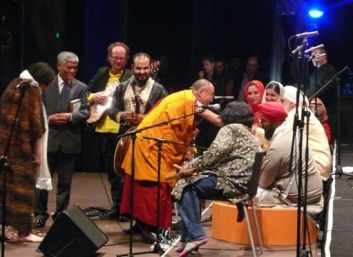 Sikhi(sm) has all the characteristics of a "world religion". Sikh ideology and temporal-spiritual (miri-piri) institutions and distinct Sikh identity, tradition, language and culture, have progressed through a most eventful Sikh history to give the Sikhs the characteristics of a religio-ethnic people. Twice in Sikh history they established own kingdom in a large part of the northern Indian subcontinent. Sikh nationhood is a natural consequence of the unfolding of Sikh ideology and evolution of Sikh institutions.
Sikhi(sm) has all the characteristics of a "world religion". Sikh ideology and temporal-spiritual (miri-piri) institutions and distinct Sikh identity, tradition, language and culture, have progressed through a most eventful Sikh history to give the Sikhs the characteristics of a religio-ethnic people. Twice in Sikh history they established own kingdom in a large part of the northern Indian subcontinent. Sikh nationhood is a natural consequence of the unfolding of Sikh ideology and evolution of Sikh institutions.
Today, Sikhs may not be a geographical nation but they have national characteristics and aspirations. In the Mandla case, the House of Lords afforded protection to Sikhs under the Race Relations law as an ethnic group; the same sort of protection afforded to other ethnic groups and nationalities. Yet, there is ample evidence, especially after 9/11 that religious and "ethnic" persecution of Sikhs in the West is on the increase.
We have seen that the visible Sikh articles of faith and the turban, are the sacred gifts of the Guru, and that it is not within the discretion of an Amritdhari (Khalsa initiated) Sikh to surrender these to some secular authority. Otherwise, Sikh representatives continue to work co-operatively with security and other agencies to ensure a reasonable balance between safety and security, and Sikh religious imperatives.
Overt religious persecution of Sikhs in the West due to state policy ("intellectual" challenge) of assimilation is having the opposite effect to that intended. Such coercion and public harassment through e.g. profiling and meaningless ritualistic turban searches at airports and, led by France, banning of turbans in schools and on identity photographs in Europe, will either alienate, especially, young Sikhs born and brought up in Western countries, or drive them away from the responsible discipline of their religion, much to the concern of the older generation Sikhs.
Gurdwaras can set up legal defence funds at national levels, so that cases of religious identity related harassment and persecution can be taken up before the law courts by Sikh organizations with a proven track record. Complaints of religious persecution should be taken up against public and private sector organizations, and against local government, departments and agencies, and, as a last resort, against national governments.
As senior politicians begin to take note of increasing Sikh vote banks and lobby power by visiting the Sikh theo-political centre at Darbar Sahib complex, Amritsar, so Sikhs should present a united front when asserting their rights as loyal hard working citizens of the countries they live in.
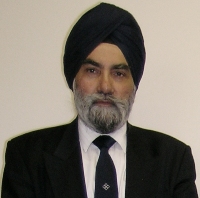 Gurmukh Singh
Gurmukh Singh
(Ret'd Principal (policy), UK Civil Service)
Full article with source references can be read at the Sikh Missionary Society UK website:
http://www.sikhmissionarysociety.org/sms/smsarticles/advisorypanel/ChallengesToSikhIdentityInTheWest.pdf )
*House of Lords Mandla case 1983: The full judgement can be read at the Sikh Missionary Society UK website link:
http://www.sikhmissionarysociety.org/sms/smsarticles/legal/MandlaAndAnotherVDowellLeeAndAnoth er.doc )
Further reading: Neha Singh Gohil & Dawinder Singh Sidhu, The Sikh Turban: Post 911 Challenges to This Article of Faith, p.2 RUTGERS JOURNAL OF LAW AND RELIGION
http://www0.hku.hk/sociodep/bbf/BBF%20Readings%20W10/W10%20TheSikhTurban.pdf
